Do you need to prune lantana? Why trimming will result in prolific blooms
It may be of some debate, but pruning perennial and annual lantana plants keeps them controlled and thriving
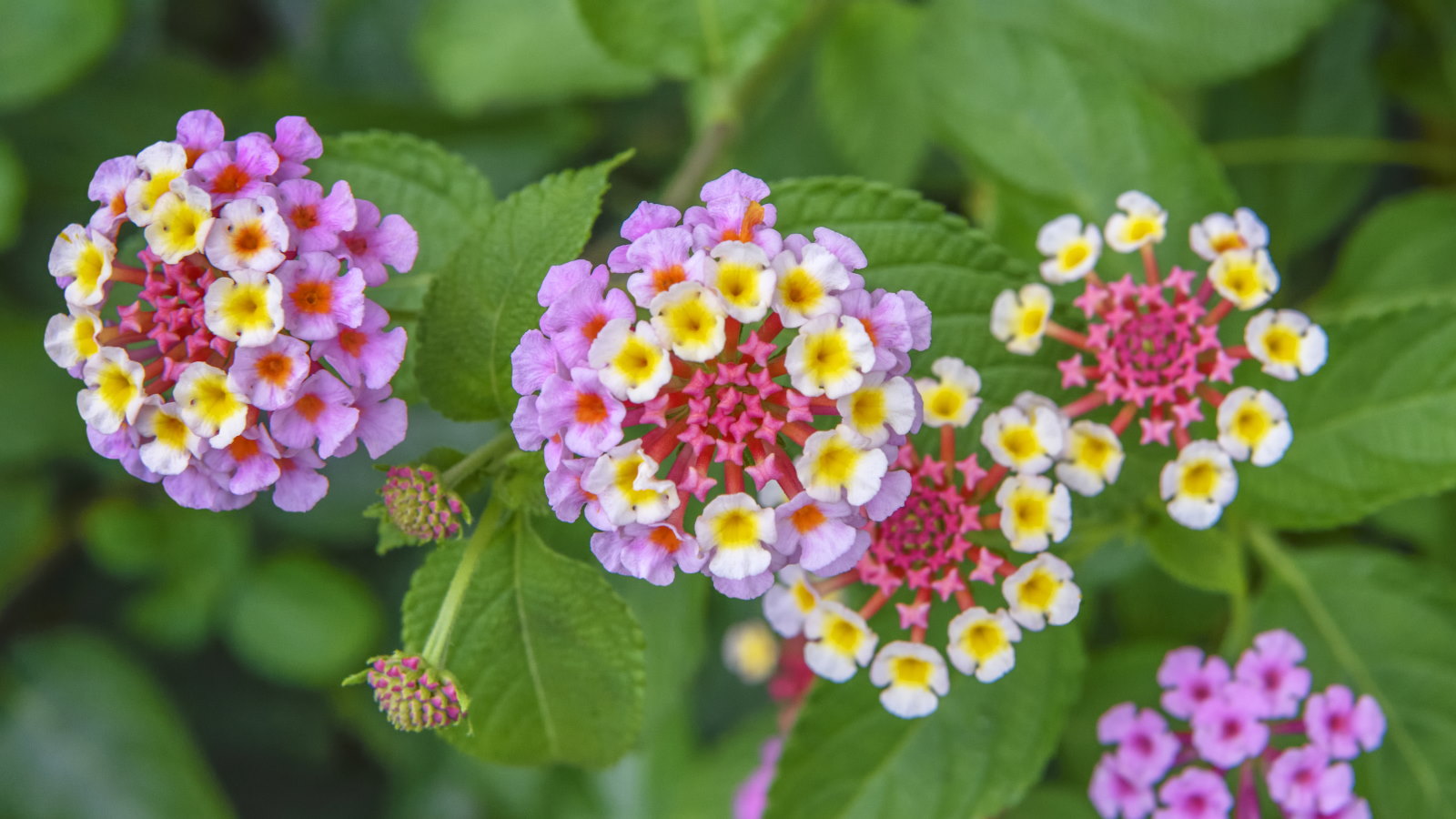

If you want colorful exuberance in summer, lantana are bright and heat-loving flowering plants for growing in borders or containers. You can get annual or perennial varieties and which you plant will affect how much you need to prune lantana.
There is not always a need to prune when growing lantana, as plants will happily grow and flower without much fuss. However, lantana can spread and get unruly. Pruning can control this and, in addition, plants will benefit from light trimming during their flowering period to keep them in top shape.
So the question is, should we prune lantana or not? How much pruning you need will depend on the type of lantana. It is advantageous to prune perennial lantana at least once a year to keep plants healthy and compact, while both types can be kept neat thanks to some summer pruning.
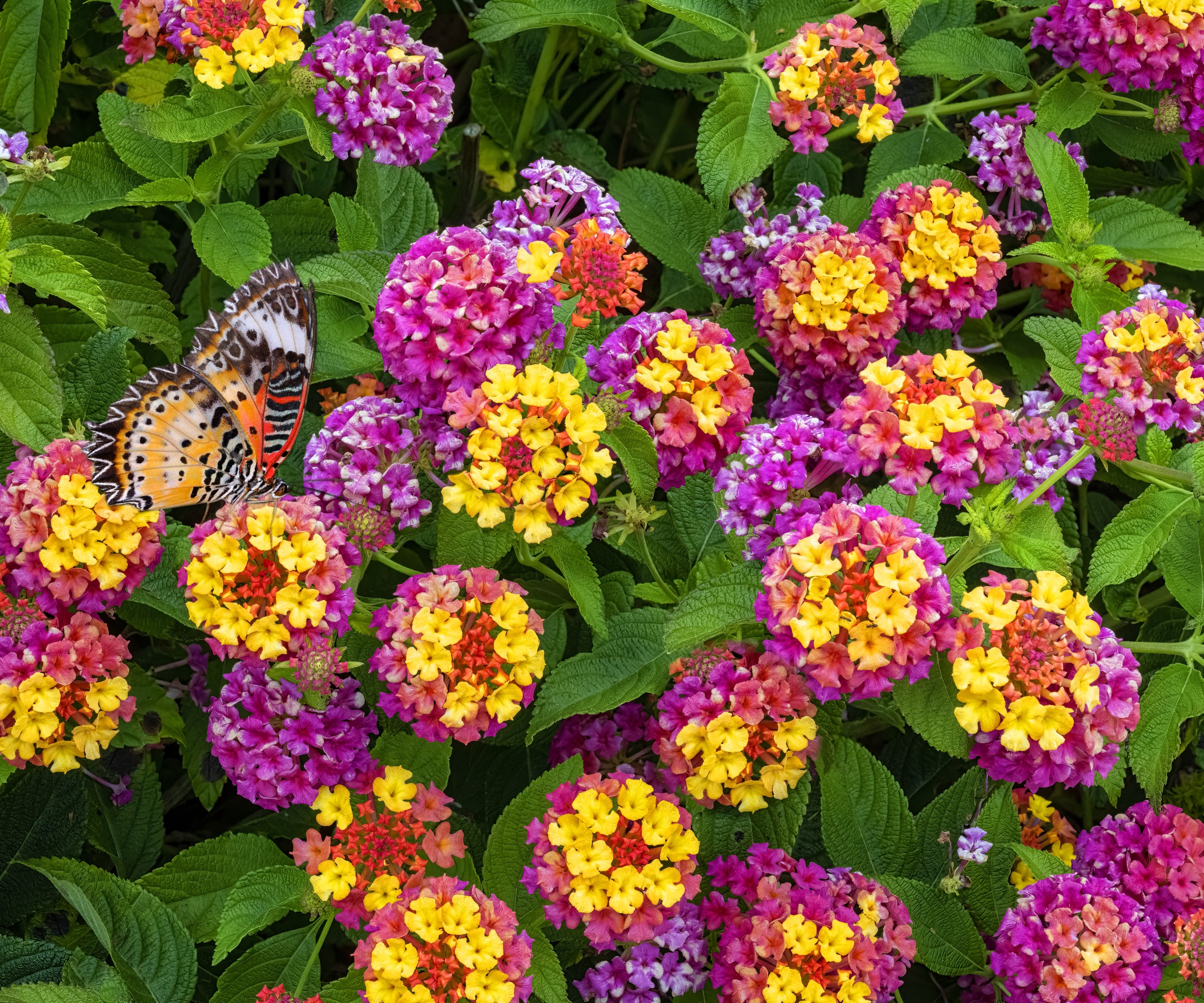
Prune lantana to encourage the development of more blooms
A guide to lantana pruning
Whether you usually trim or not, let’s deep dive into when and how to prune lantana for healthy and beautiful plants.
When to prune lantana
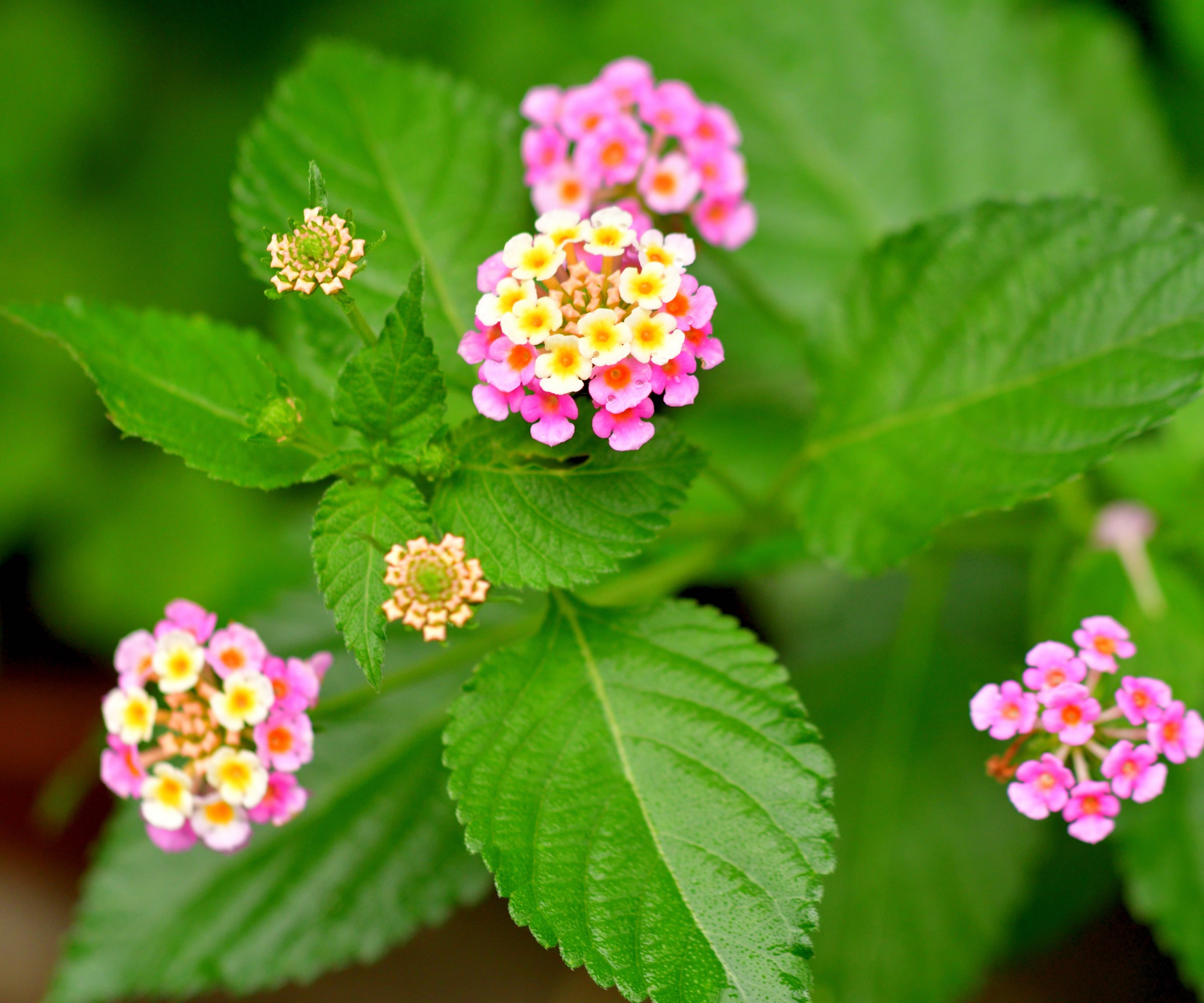
Lantana come in various colors, including pink, red, orange, and white
Lantana can be grown in flower beds or container gardens to provide long seasons of color from spring until the first frost. They are commonly grown as annual plants and the main pruning required for these is to deadhead lantana to keep them tidy and, in some varieties, promote a long blooming season.
Deadheading is not essential, but advisable in many cases. For example, Lantana camara is considered an invasive plant in some US states and deadheading plants will combat the spread. Many lantana varieties commonly sold are sterile though and will not produce viable seeds.
Pruning is most important when growing lantana as a perennial plant. Making time to prune lantana annually keeps the plant healthy and productive, ensuring it puts on the best show of blooms year after year.
Prune lantana back in late winter or early spring after the risk of frost has passed and before it starts to put on new growth in spring. This annual trim of perennial lantana will keep plants compact and stimulate new growth to promote flowering.
Plants will also benefit from additional light pruning throughout the year. Summer offers an ideal opportunity to trim perennial and annual lantana lightly. It can keep them compact, and neat, and promote flowering.
Scott Seargeant, an experienced landscape gardener and owner of Seargeant Landscape & Arboriculture, claims that regular trimming once established can ‘reduce shabbiness and rejuvenate’ older perennial lantana plants.
‘Prune lantana in mid-summer if it is starting to look overgrown, shabby or losing the foliage and flowers in the center of the plant,’ recommends Scott. ‘It will look semi-woody inside or underneath. This could be the second or third summer after planting.’
You can prune lantana in the fall or early winter, however, the old flower heads can be beneficial in a wildlife garden as a food source for birds and the stems can protect the crown during the colder months.

Scott Seargeant is an international consulting arborist and owns a full-service landscape installation company featuring the design, consultation, and installation of beautiful landscapes.
How to prune lantana
As mentioned above, lantana will benefit from being cut in late winter and summer in different ways. Whenever you prune lantana, use clean and sharp pruning shears to avoid damaging plants and spreading diseases around the yard and aim to make pruning cuts at a 45-degree angle.
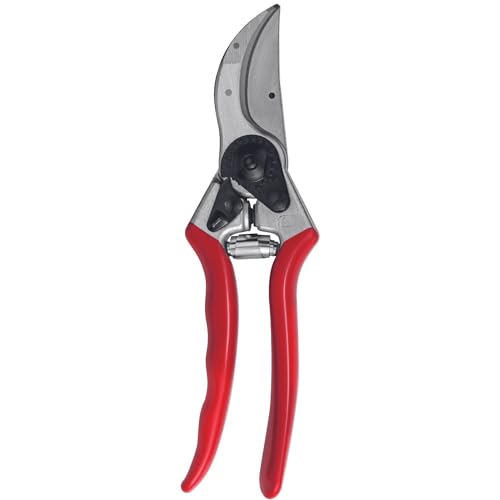
A pair of sharp and comfortable pruning shears are key for pruning lantana. These Felco F-2 pruners are a common choice for the best pruners as they are comfortable, hard-wearing, and razor-sharp - plus all the parts are replaceable.
How to prune lantana plants in winter
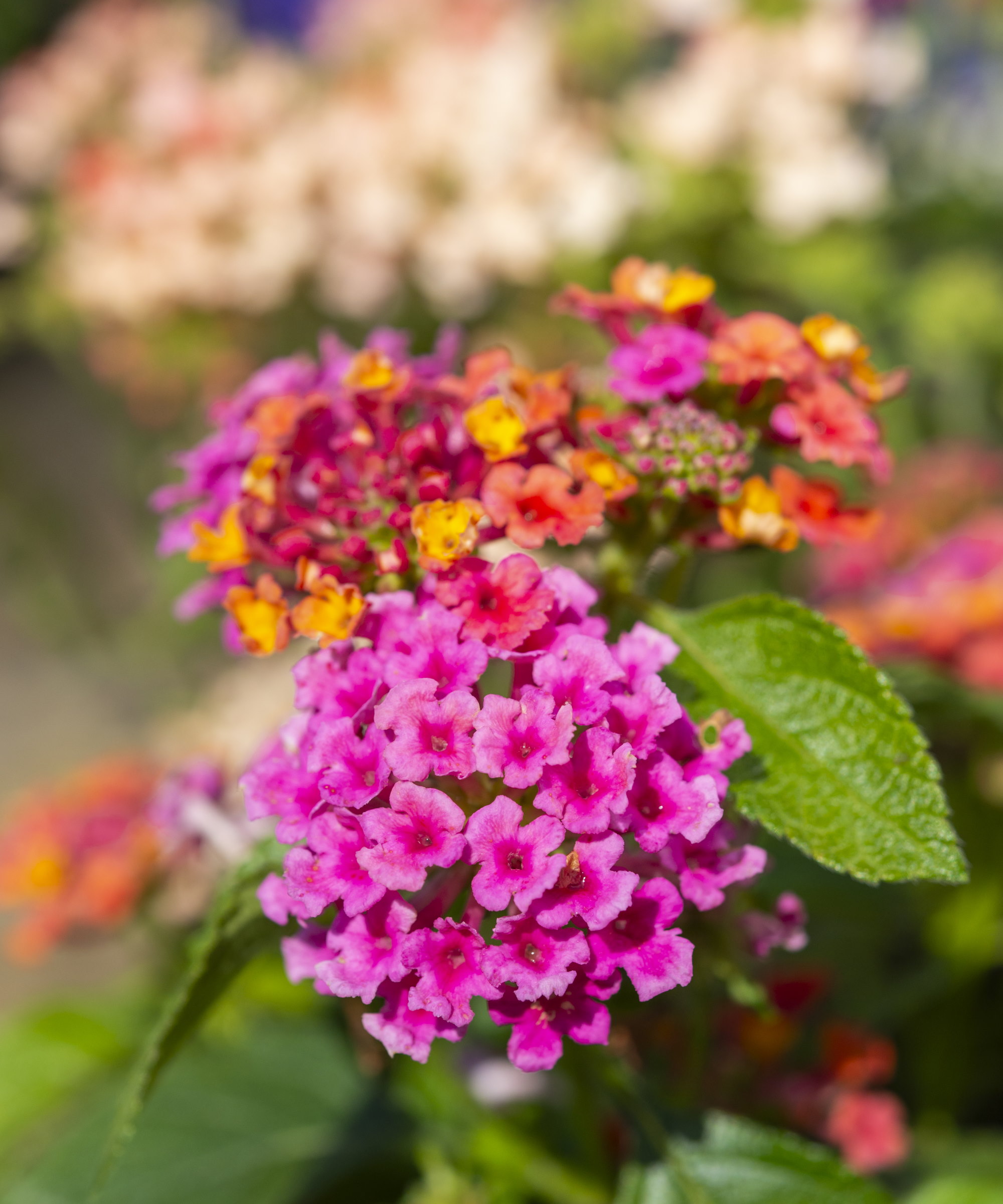
Lantana are hardy in US hardiness zones 8-11
Late winter or early spring is the time to prune lantana back hard. It would be a pruning mistake to cut lantana hard in the fall as the winter colds could get into the cuts and damage the plant.
Aim to trim the lantana stems to 6-12 inches from the ground and remove any older, damaged, or diseased stems to keep the plant productive. Scott Seargeant advises: ‘Prune off the dead stems back to living tissue. Look for green color from the cut ends to determine where the living parts are.’
How to prune lantana plants in summer
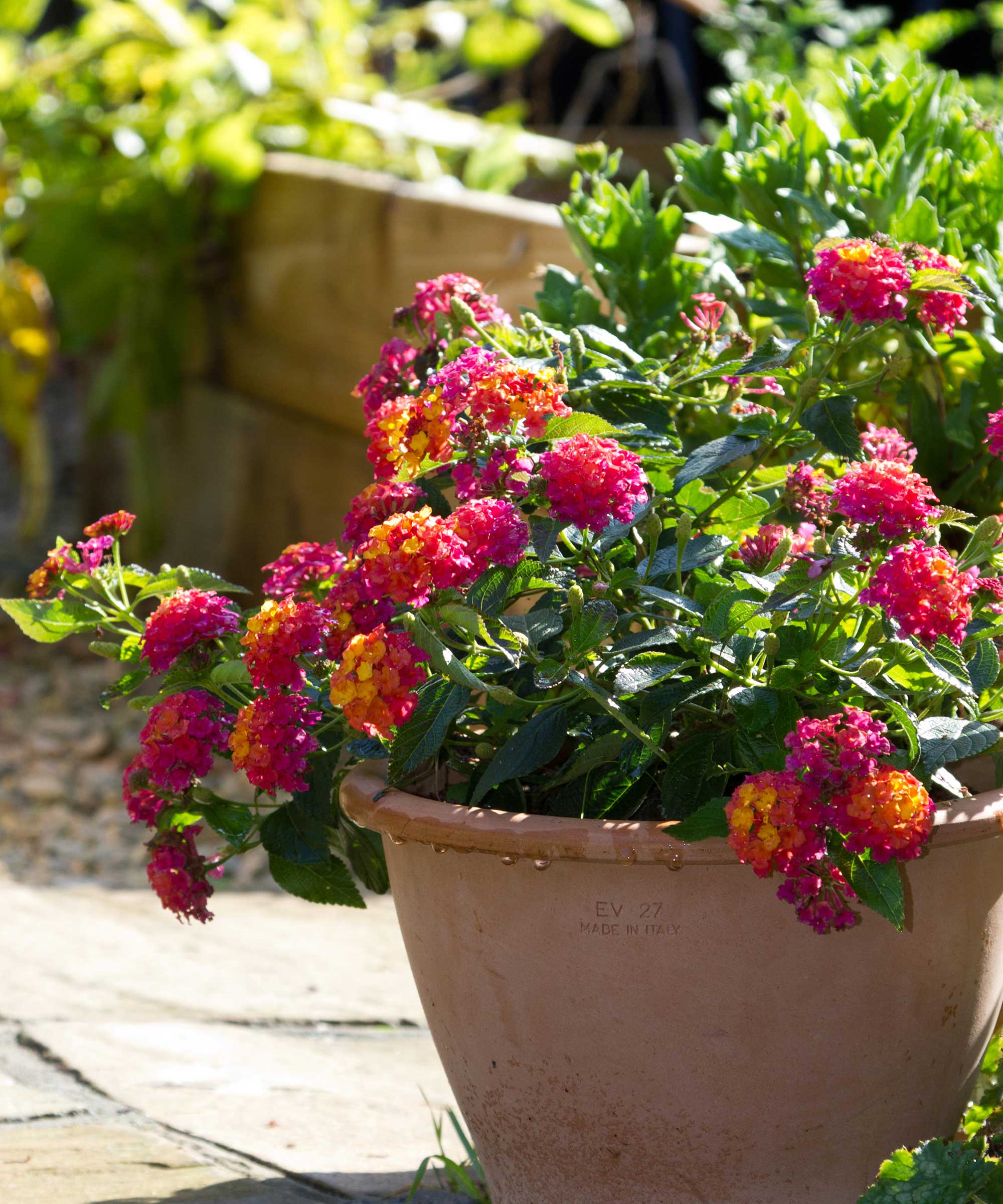
Lantana can grow happily in sunny containers
Lantanas are fast-growing plants that benefit from light cosmetic trimming throughout the growing season to keep them looking their best. Long or straggly stems can be trimmed back by 1-3 inches to neaten the plant and keep it compact. Old flowers and unattractive stems are also removed to keep the plant aesthetically pleasing.
Scott Seargeant recommends a mix of pruning methods in summer to keep lantana under control. He says: ‘I like to prune lantana with a combination of heading cuts (cutting the ends back) and thinning cuts (removing a whole stem back to near where it comes out of the ground). This reduces bushiness and reduces the diameter size of the plant.’
Taking time to fertilize lantana after summer pruning will help the plant bounce back well from any trimming. Feed plants with a water-soluble bloom-boosting fertilizer, such as this food for flowering plants at Walmart, to encourage the lantana to produce more flowers during the summer.
FAQs
How do I get more blooms on lantana?
Lantana wants full sun - at least six hours a day - and regular watering to guarantee a great display of flowers. Deadheading the plant once the flower head fades will also concentrate the plant’s energy into creating more blooms rather than producing berries.
Should you remove seed pods from lantana?
Yes, prune off the seed pods as they develop to keep the plant blooming. You can leave the pods to collect seeds, however, as previously mentioned, many lantana hybrids are sterile and will not produce fertile seeds. Furthermore, the seeds from other hybrid cultivars may not produce the same flowers as the parent plant once sown.
Lantana are fantastic low-maintenance plants to have as part of a garden for pollinators. Their colorful flowers attract bees, butterflies, and hummingbirds in droves throughout lantana’s long blooming season. If you want a spectacular and easy-to-grow plant for pollinators, then lantana ticks all the right boxes.
Sign up to the Homes & Gardens newsletter
Design expertise in your inbox – from inspiring decorating ideas and beautiful celebrity homes to practical gardening advice and shopping round-ups.

Drew’s passion for gardening started with growing vegetables and salad in raised beds in a small urban terrace garden. He has worked as a professional gardener in historic gardens and specialises in growing vegetables, fruit, herbs, and cut flowers as a kitchen gardener. That passion for growing extends to being an allotmenteer, garden blogger, and producing how-to gardening guides for websites. Drew was shortlisted for the New Talent of the Year award at the 2023 Garden Media Guild Awards.
-
 Martha Stewart's intelligent cabinets 'take every inch into consideration' – their 'visually light' style will solve your small kitchen storage problems
Martha Stewart's intelligent cabinets 'take every inch into consideration' – their 'visually light' style will solve your small kitchen storage problems'Every kitchen can be beautiful and functional, no matter what the size': 9 years since sharing her clever storage, Martha's cabinets are just as beautiful
By Megan Slack Published
-
 This once-dated kitchen is now a timeless space with the coziest details – and its the classic color palette that's made it a chic, welcoming space
This once-dated kitchen is now a timeless space with the coziest details – and its the classic color palette that's made it a chic, welcoming spaceWarming colors and natural materials combine to create this enduringly classic kitchen scheme
By Molly Malsom Published
-
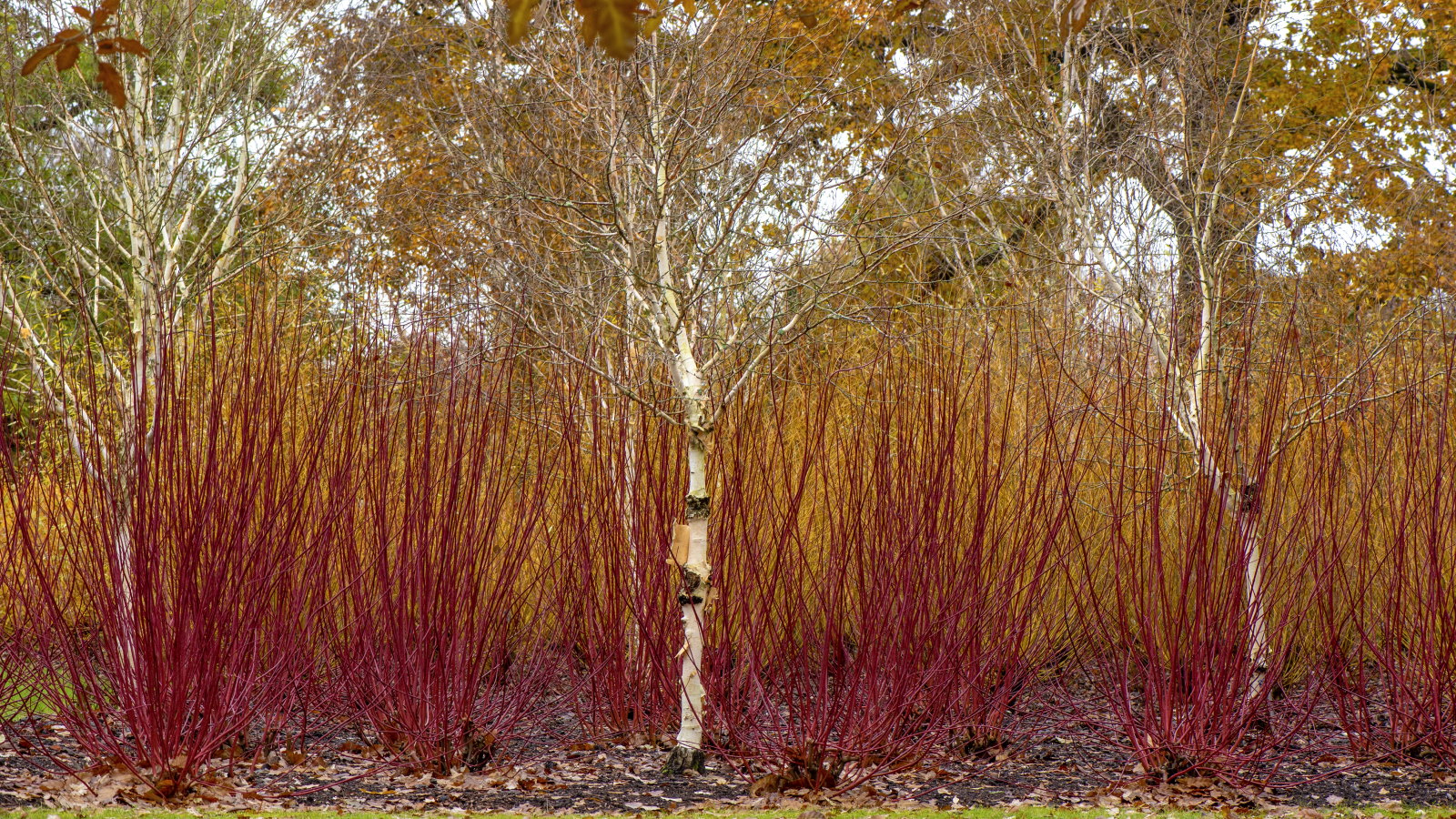 How to coppice trees and shrubs – and the 5 species that will benefit from this historical and super simple pruning technique
How to coppice trees and shrubs – and the 5 species that will benefit from this historical and super simple pruning techniqueCoppicing has aesthetic and practical benefits in a garden
By Drew Swainston Published
-
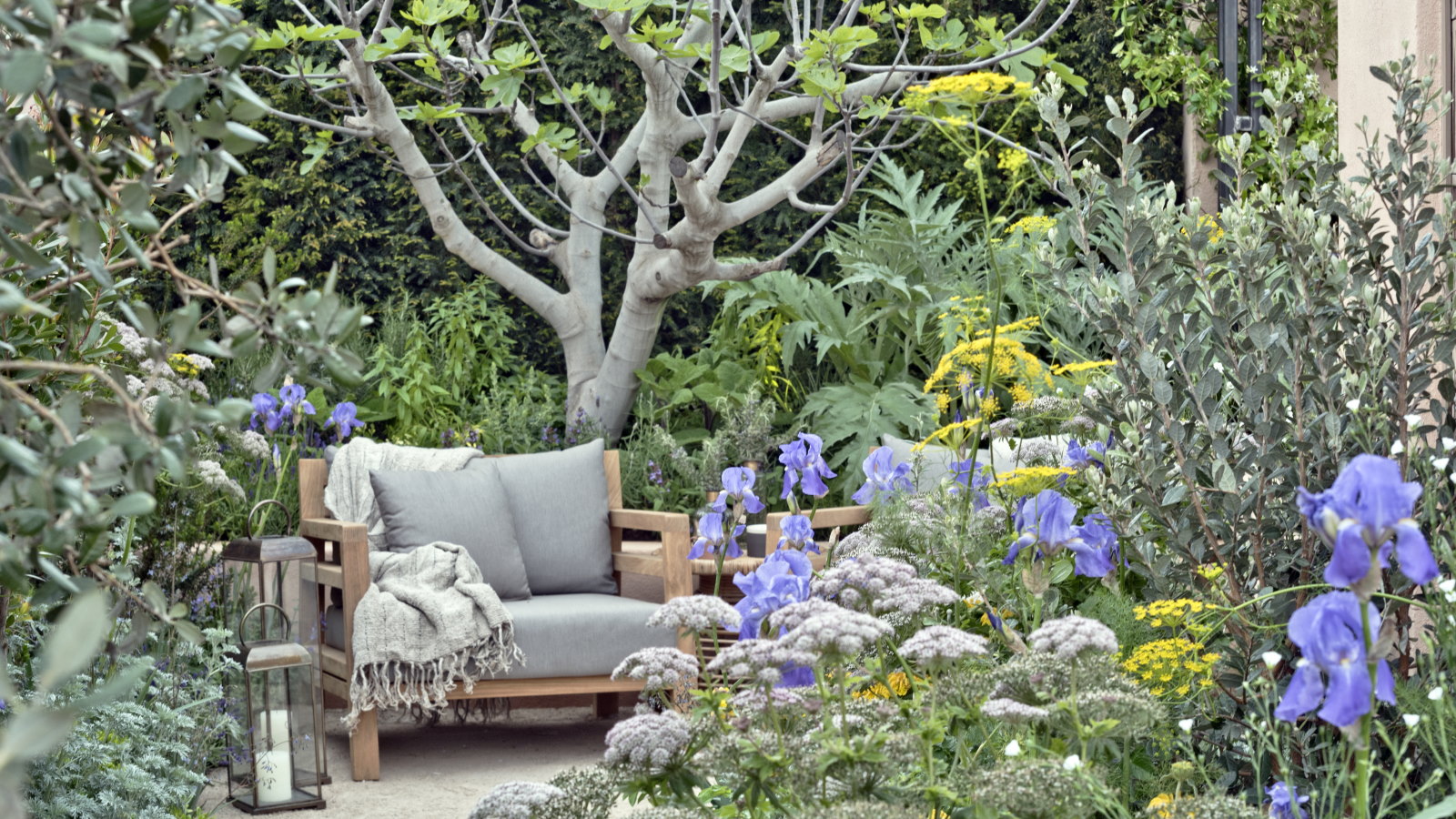 Horticulturists urge you to prune these 7 plants in April – for healthy growth and better-than-ever flowering displays
Horticulturists urge you to prune these 7 plants in April – for healthy growth and better-than-ever flowering displaysDiscover a key selection of plants to cut back this month, with expert pruning advice
By Drew Swainston Published
-
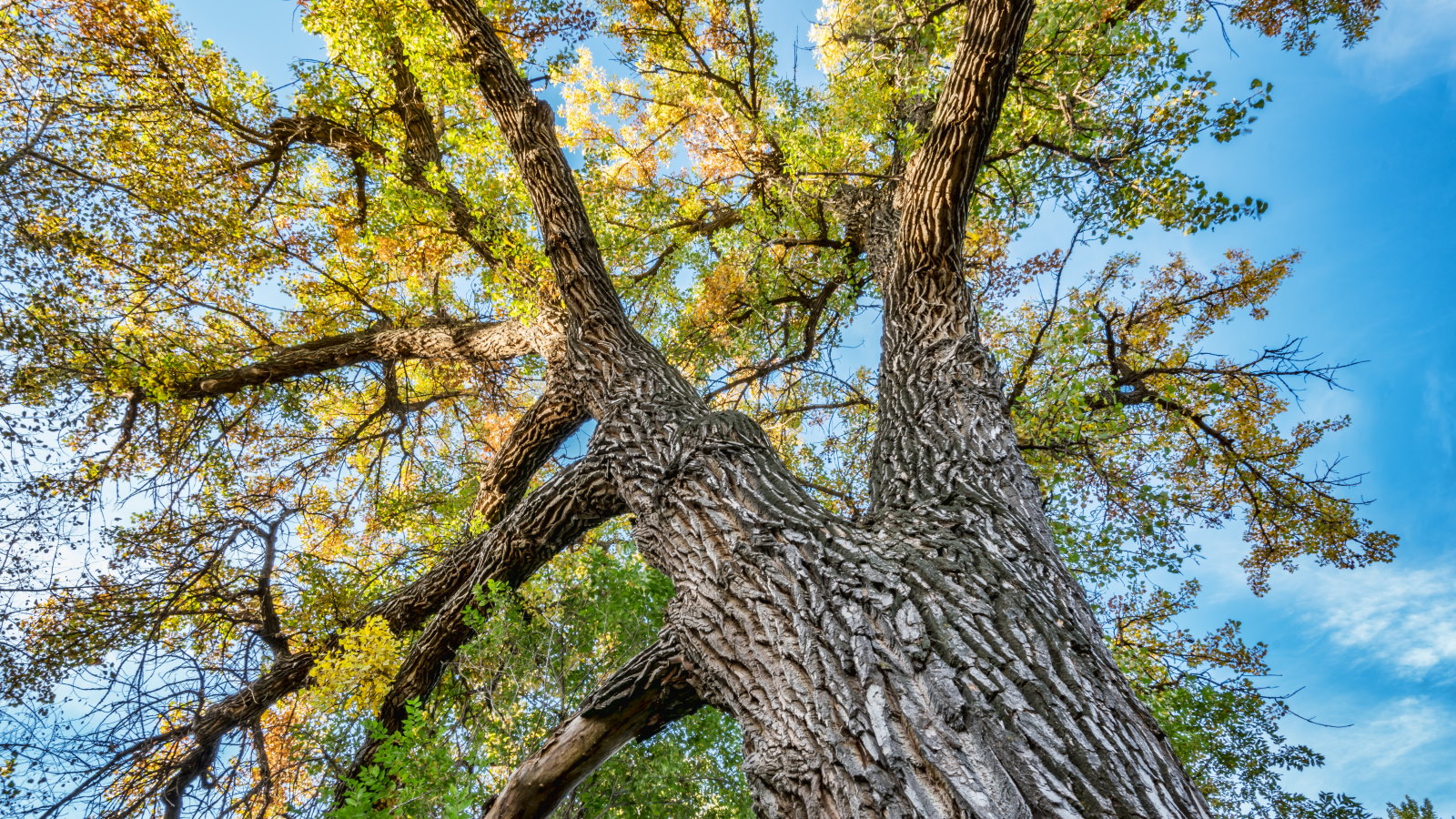 Safety is the number one reason to prune a cottonwood tree – an arborist reveals the best trimming routine to follow
Safety is the number one reason to prune a cottonwood tree – an arborist reveals the best trimming routine to followWhen and how to prune young and established cottonwoods
By Drew Swainston Published
-
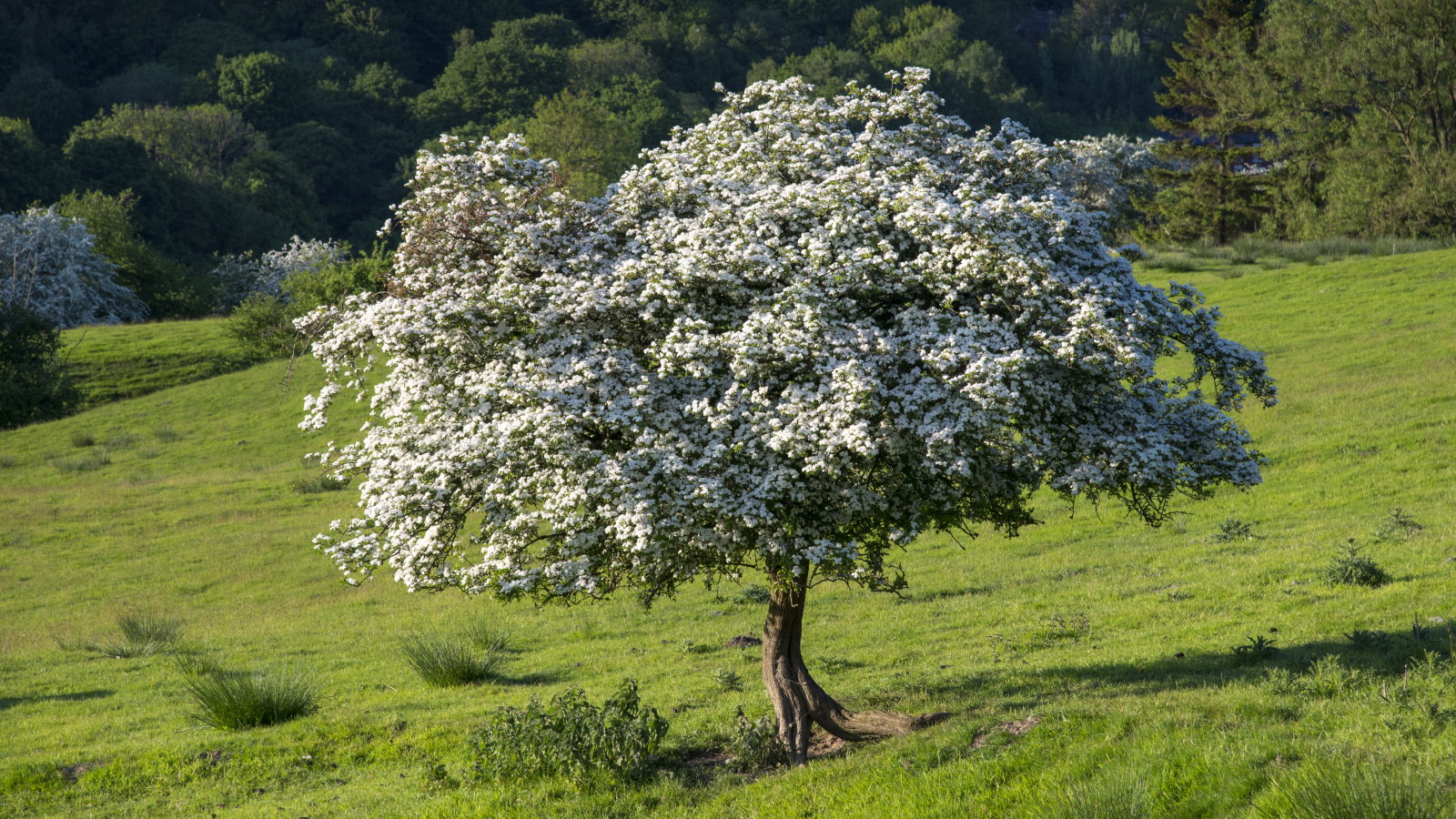 Now is the time to prune hawthorn trees to keep them healthy and attractive – 5 expert-recommended steps to follow for proper trimming
Now is the time to prune hawthorn trees to keep them healthy and attractive – 5 expert-recommended steps to follow for proper trimmingAvoid unnecessarily stressing your trees by pruning at the right time and not getting carried away
By Drew Swainston Published
-
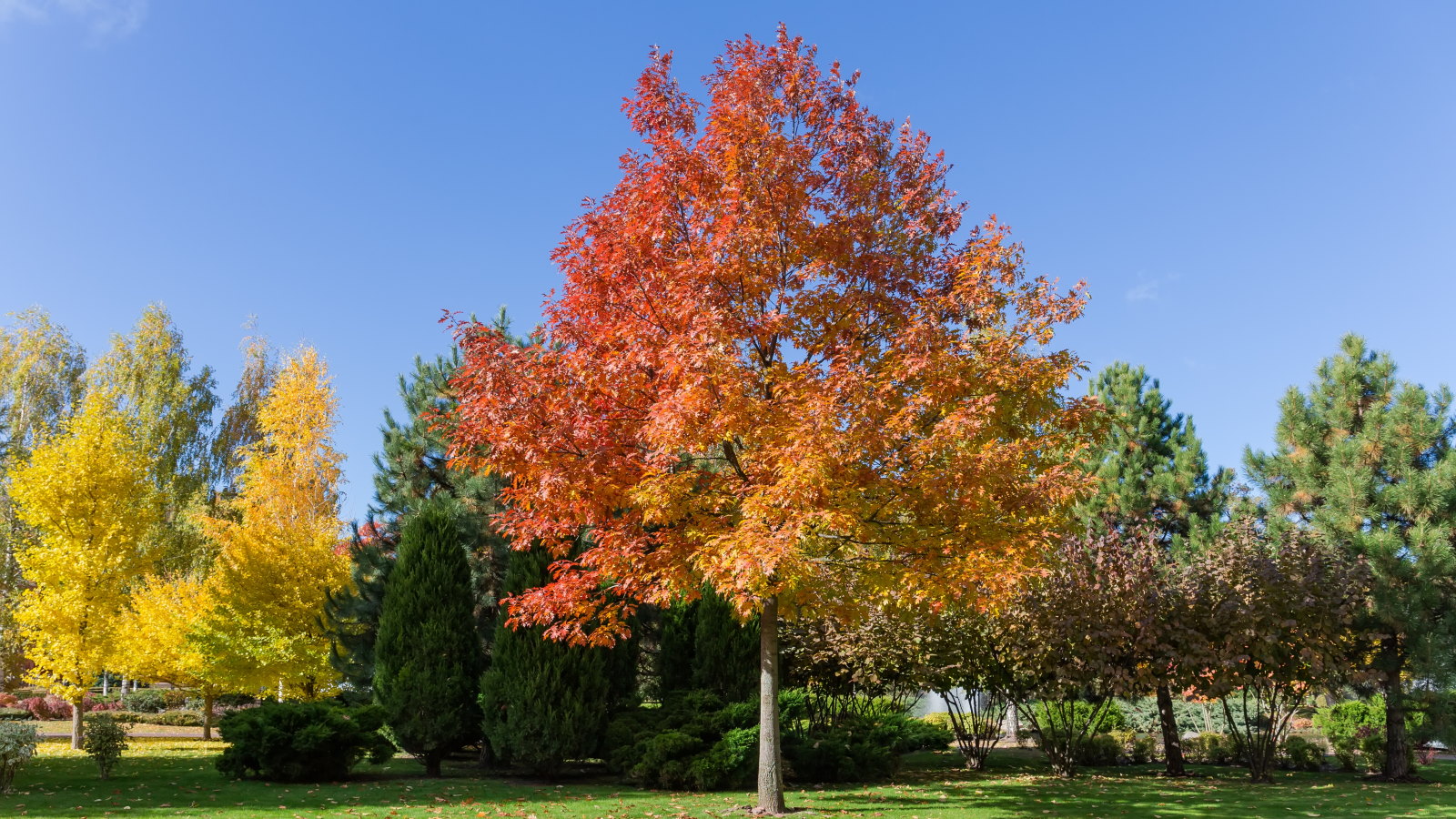 This is your last chance to prune oak trees to avoid a potentially fatal disease that can kill trees within months, arborists reveal
This is your last chance to prune oak trees to avoid a potentially fatal disease that can kill trees within months, arborists revealStay safe and discover what you can prune at different times of the year
By Drew Swainston Published
-
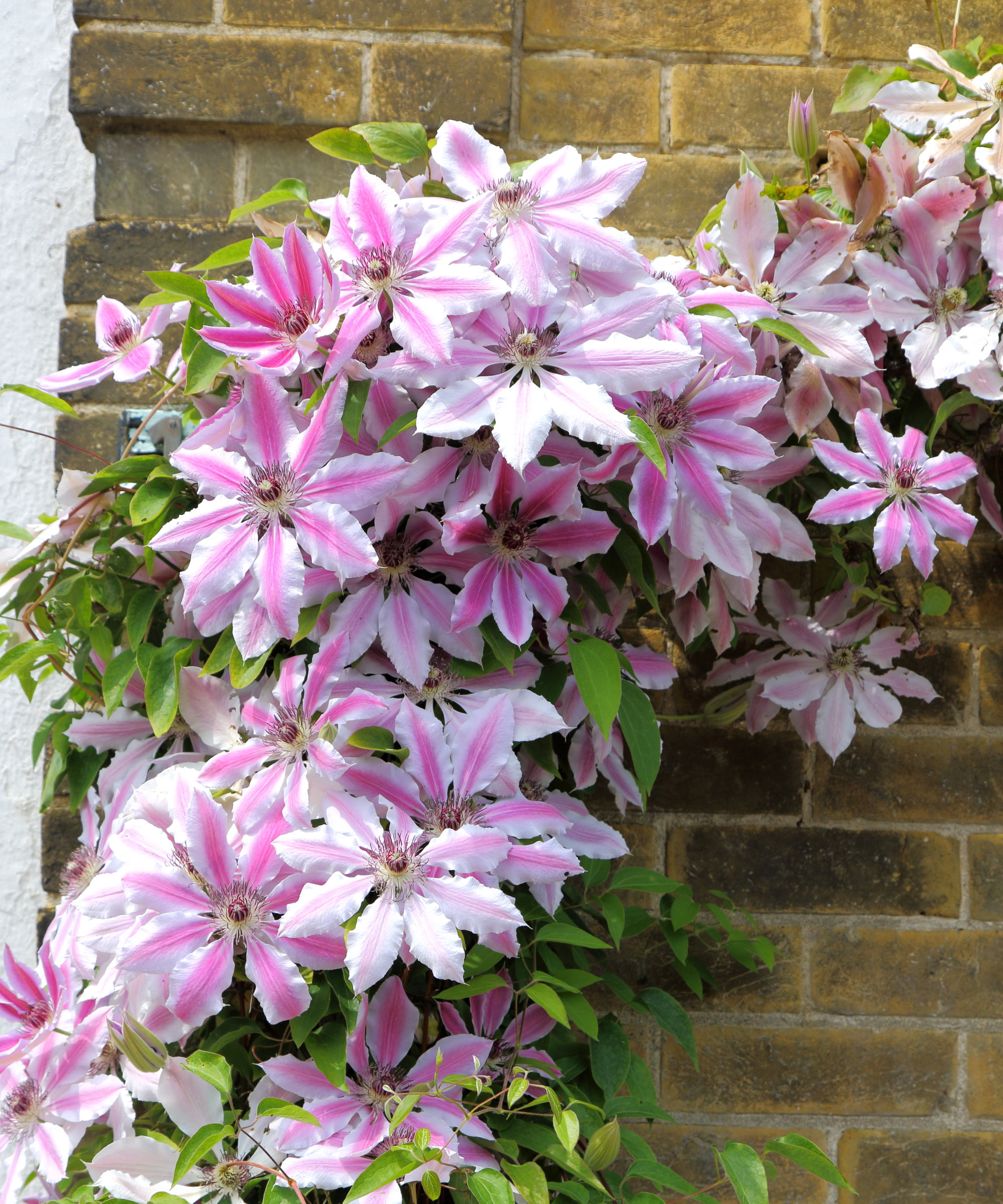 Expert horticulturists reveal 5 clematis pruning mistakes to avoid if you want spectacular floral displays
Expert horticulturists reveal 5 clematis pruning mistakes to avoid if you want spectacular floral displaysWhy you need to prune at the right time and not remove too much or too little
By Drew Swainston Published
-
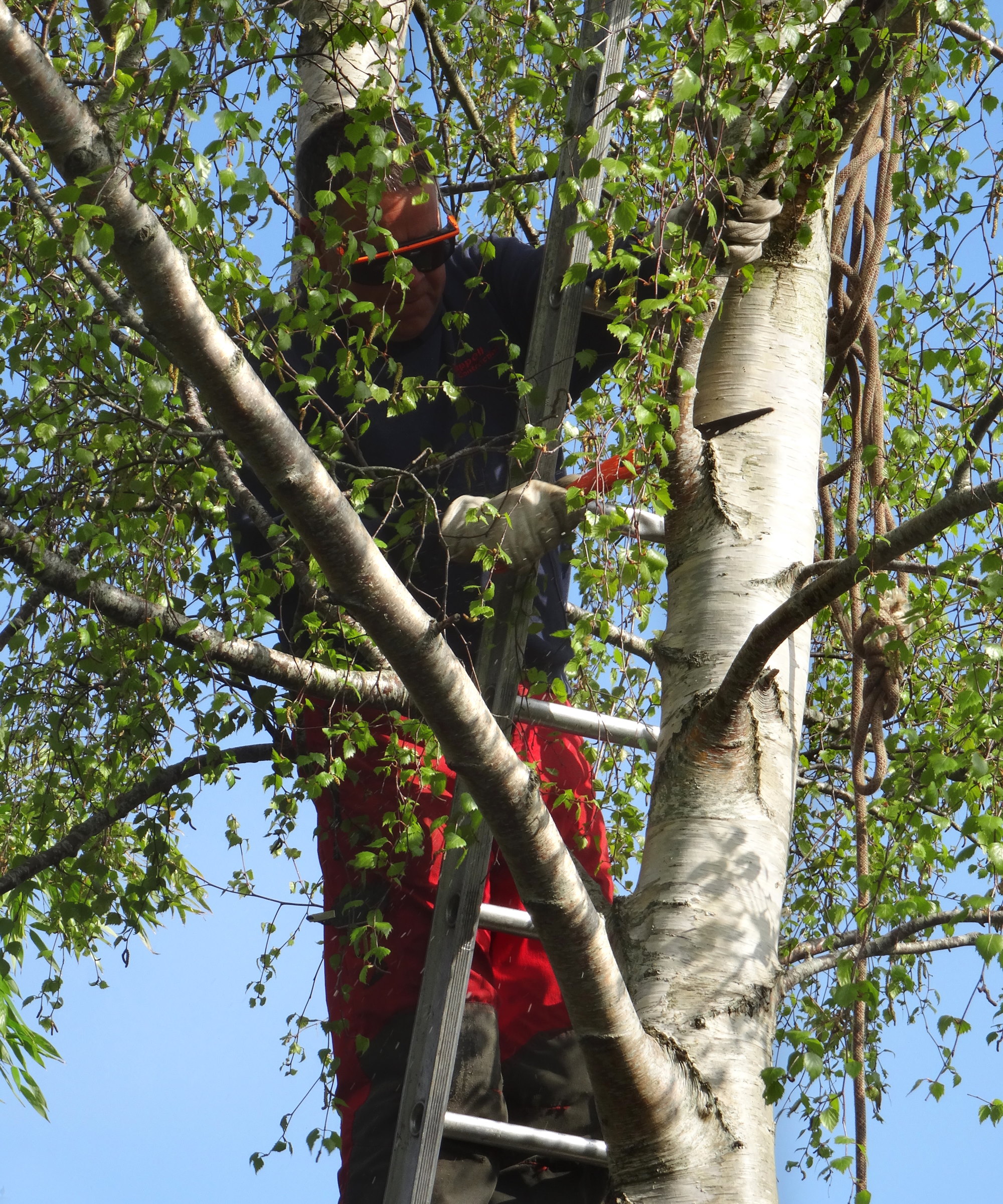 How to prune birch trees – arborists reveal 5 golden rules to follow and 3 things you should never do
How to prune birch trees – arborists reveal 5 golden rules to follow and 3 things you should never doAggressive pruning can be fatal to birch trees – here is how to avoid it
By Drew Swainston Published
-
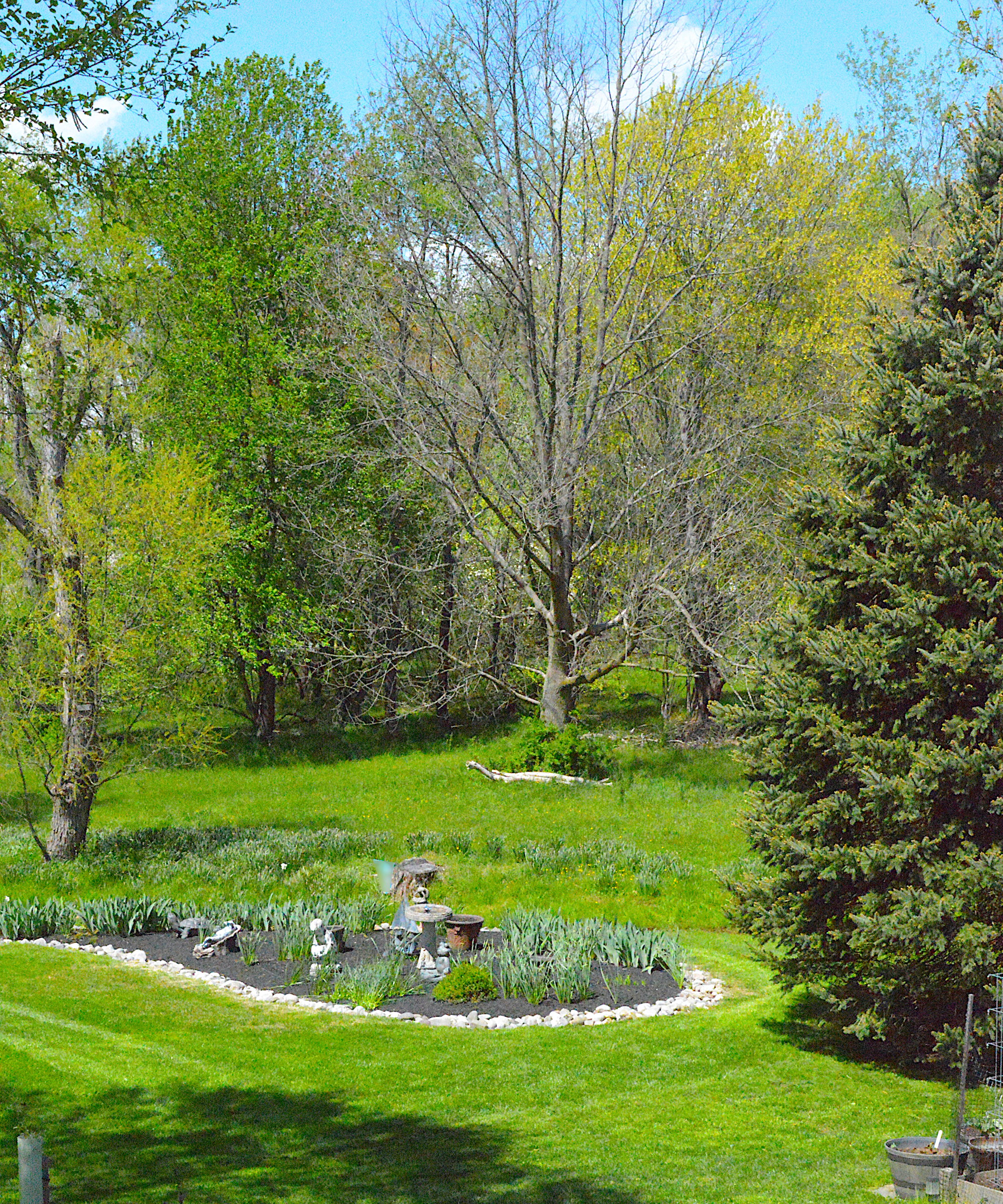 There's still time to prune deciduous trees this month – expert trimming advice for 9 of the most popular backyard trees
There's still time to prune deciduous trees this month – expert trimming advice for 9 of the most popular backyard treesThese trees will benefit from pruning in February with our handy guide
By Drew Swainston Published